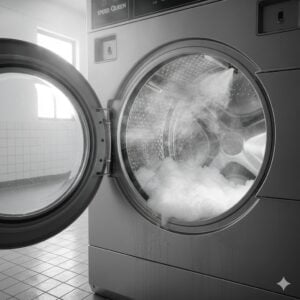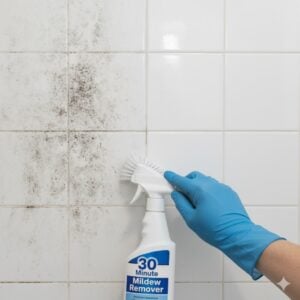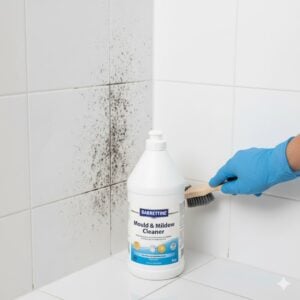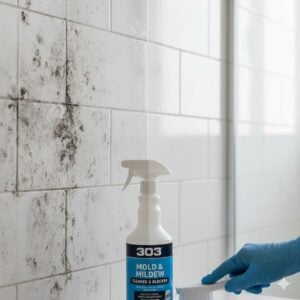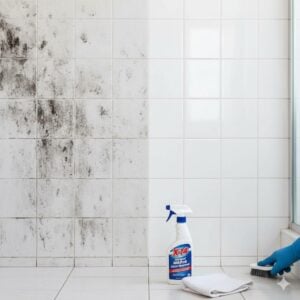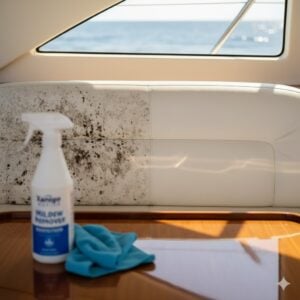Decomposition undiscovered death cleaning is a critical task enveloped in both technical complexity and profound sensitivity. When a death goes unnoticed, the ensuing decomposition poses unique cleaning challenges, necessitating a specialized approach. This process, termed ‘Decomposition Undiscovered Death Cleaning,’ involves not just the removal of biological hazards but also addressing the emotional ramifications of such situations. This article delves into three critical steps that are essential in managing these challenging scenarios effectively. By understanding and meticulously implementing these steps, professionals can ensure a respectful and thorough cleaning process, restoring safety and dignity to the affected spaces.
[lwptoc]
Table of Contents
Toggle1. Assessment and Planning
The initial stage in handling decomposition undiscovered death cleaning is a comprehensive assessment and meticulous planning. This process is crucial as it lays the groundwork for a safe and effective cleanup, ensuring that all biohazards are identified and appropriately addressed.
Understanding the Scope of Decomposition
- Decomposition begins soon after death, with the environment around the deceased undergoing significant changes. This process can result in the release of bodily fluids and the proliferation of bacteria, which can pose serious health risks.
- The assessment involves a thorough inspection of the premises to determine the extent of decomposition. This includes identifying areas where bodily fluids have seeped into and assessing the potential for structural damage, such as staining and corrosion.
- The evaluator also needs to consider factors such as the duration since the death occurred and the environmental conditions, as these can significantly affect the decomposition rate and the extent of contamination.
Planning the Cleanup Process
- Based on the assessment, a detailed cleanup plan is developed. This plan outlines the necessary steps and resources required, including personal protective equipment (PPE), specialized cleaning agents, and tools.
- Selecting appropriate PPE is critical to protect the cleaning crew from harmful pathogens. This typically includes gloves, protective suits, masks, and eye protection. The level of protection required depends on the severity of the decomposition.
- The choice of cleaning agents and tools is equally important. Enzymatic cleaners and industrial-grade disinfectants effective against a broad spectrum of pathogens are selected. Additionally, specialized equipment like HEPA vacuum cleaners, steam cleaners, and ozone generators may be required for thorough cleaning and odor elimination.
Handling Biohazardous Materials
- A key part of the assessment is identifying and categorizing biohazardous materials. These include not only bodily fluids but also contaminated personal belongings and furniture.
- The proper handling and disposal of these materials are critical. Biohazardous waste must be carefully collected, securely sealed, and disposed of following legal and environmental regulations.
- In cases where the death was unattended and undiscovered for an extended period, there might be a need for more extensive biohazard management, as detailed in 7 Key Aspects of Unattended Death Cleanups.
Risk Assessment and Crew Safety
- The safety of the cleaning crew is paramount. Part of the planning process involves conducting a risk assessment to identify potential hazards and implement safety measures to mitigate these risks.
- Crew members are trained to recognize and handle the psychological impact of working in such environments, ensuring their mental well-being alongside their physical safety.
Collaboration with Authorities
- In certain cases, particularly where the cause of death is unclear, it may be necessary to collaborate with law enforcement or other authorities. This collaboration ensures that the cleanup process does not interfere with any ongoing investigations.
- Legal compliance is key, and the cleaning service must be knowledgeable about local laws and regulations regarding death scenes and biohazard handling.
Communication with Affected Parties
- Effective communication with property owners, family members, or other affected individuals is an integral part of the process. This involves explaining the extent of the contamination, the steps required for cleanup, and the expected outcomes.
- Providing clear and compassionate communication helps alleviate the concerns of those affected, offering reassurance during a distressing time.
Creating a Tailored Approach
- Each decomposition undiscovered death scene is unique, requiring a tailored approach. Factors such as the size of the area, type of surfaces affected, and presence of pests or insects are considered in customizing the cleaning plan.
- For example, hardwood floors may require a different cleaning approach compared to carpets or fabrics, which may absorb bodily fluids more extensively.
2. Specialized Cleaning Techniques
The second crucial step in managing decomposition undiscovered death cleaning involves deploying specialized cleaning techniques. This task is imperative due to the unique challenges posed by decomposition, which often leads to the release of bodily fluids and other biohazards that can present significant health risks. In these situations, bodily fluids such as blood, urine, and feces, along with other potentially infectious materials (OPIM), are typically released. These fluids can seep into flooring, furniture, and even the structural elements of a building, making their removal a complex and challenging process.
The cleaning process begins with the meticulous physical removal of these fluids, utilizing absorbent materials and industrial-grade cleaning agents to ensure thorough eradication. In instances where fluids have penetrated deep into surfaces, more intensive methods, such as steam cleaning, are often necessary. The application of appropriate disinfectants is a pivotal aspect of the cleanup process. Utilizing EPA-registered disinfectants ensures the elimination of pathogens that can linger in bodily fluids and other biological materials. The disinfection process involves a careful application and adherence to the specified contact times as recommended by the disinfectant guidelines. This step ensures that the area is not only visually clean but also hygienically safe.
Decomposition typically results in strong, unpleasant odors that can permeate a property. Addressing these odors involves not just masking the smells but completely eradicating them. Techniques such as ozone treatment and the use of industrial-grade air purifiers and deodorizers are employed to neutralize odors at their source. Bodily fluids can leave behind stains that are difficult to remove, especially on porous surfaces. Specialized cleaning agents and techniques are utilized to address these stains, restoring the appearance of the affected surfaces. In some cases, parts of the property, such as flooring or drywall, may be too severely damaged and need to be replaced. This decision is based on the extent of the damage and the likelihood of complete restoration through cleaning alone.
After the physical cleaning and disinfecting, the area undergoes a process of sanitization to ensure it is free from any microbial contamination. This step is crucial, especially in environments where decomposition has been extensive. Microbial remediation involves the use of specialized equipment and agents that can eliminate a wide range of bacteria, viruses, and fungi, ensuring a safe living environment. The safety of the cleaning crew is paramount throughout the cleanup process. This involves not only the use of personal protective equipment (PPE) but also adherence to safety protocols that protect the crew from exposure to harmful pathogens and emotional distress. Regular health check-ups and psychological support for the crew are essential, considering the challenging nature of their work.
Compliance with health and safety regulations is a critical aspect of the cleaning process. This includes proper disposal of biohazardous waste, adherence to OSHA guidelines, and ensuring that all cleaning methods meet industry standards. Documentation of the cleaning process and the measures taken to ensure safety and compliance is maintained for legal and ethical reasons. The final goal of the cleaning process is to restore the property to its pre-incident state. This involves not just cleaning and sanitizing but also repairing or replacing any damaged items. Restoration can be an emotional process for families and property owners. Providing empathetic support and clear communication throughout this phase is crucial.
3. Odor Elimination and Property Restoration
In decomposition undiscovered death cleaning, addressing odor elimination and property restoration are critical final steps. This phase goes beyond the basic cleanup, focusing on returning the environment to a livable state and dealing with the lingering effects of decomposition.
Table: Strategies for Odor Elimination and Property Restoration
| Strategy | Description | Application |
|---|---|---|
| Comprehensive Odor Assessment | Identifying the sources of odors, which often include bodily fluids and decomposition gases. | Thorough inspection of the area to pinpoint all sources of odor, including hidden areas such as under flooring or within wall cavities. |
| Use of Industrial Odor Neutralizers | Employing powerful odor neutralizers and deodorizers that can tackle the strong smells associated with decomposition. | Application of these agents throughout the affected area, ensuring deep penetration into porous surfaces for effective odor removal. |
| Advanced Air Purification Techniques | Implementing air purification systems, including HEPA filters and ozone generators, to remove odor-causing particles and improve air quality. | Continual air purification during and after the cleaning process to completely remove lingering odors and ensure a fresh environment. |
| Detailed Cleaning and Sanitization | Conducting a meticulous cleaning process to remove all residues and contaminants left by decomposition. | Utilization of EPA-approved disinfectants and thorough cleaning practices to ensure complete sanitization of the area. |
| Material Assessment and Replacement | Evaluating the condition of materials such as carpets, furniture, and drywall that may have absorbed odors or become contaminated. | Replacement of materials that cannot be fully cleaned or restored, ensuring the property is free from any remnants of the incident. |
| Structural Restoration | Addressing any structural damage caused by decomposition, such as stains or corrosion. | Repairing or replacing damaged structural elements to restore the property to its original condition. |
| Monitoring and Reevaluation | Continuously assessing the effectiveness of odor elimination and restoration efforts. | Regular follow-up and additional treatments as necessary to ensure that all odors are eradicated and the restoration is complete. |
Statistical Insight into Odor Elimination Challenges:
- Research indicates that exposure to unpleasant odors can significantly impact mental health and well-being, making effective odor control a critical aspect of decomposition cleanup.
- Advanced air purification technologies have been proven to remove up to 99.97% of airborne particles, including those responsible for odors, underscoring their importance in the cleanup process.
The process of odor elimination and property restoration begins with a comprehensive assessment to identify all potential sources of odor. This includes not only the obvious areas where decomposition has occurred but also less visible places where odors may have permeated. Utilizing industrial-grade odor neutralizers is essential for tackling the strong, often pungent smells associated with decomposition. These agents are designed to not just mask odors but neutralize them at the source.
In addition to surface treatments, the implementation of advanced air purification techniques plays a crucial role in odor elimination. Systems such as HEPA filters and ozone generators are effective in removing odor-causing particles from the air, significantly improving the overall air quality in the affected area. This step is especially important in ensuring that the environment is not just visually clean but also olfactorily neutral.
The cleaning and sanitization process is meticulous, involving the use of EPA-approved disinfectants and thorough cleaning techniques. This ensures that all surfaces are free from biological contaminants, reducing the risk of health hazards and further odor development. In many cases, materials such as carpets, upholstery, and even drywall may need to be assessed for their condition. Items that have absorbed odors or become contaminated beyond salvage may require replacement.
Structural restoration is also a key component of this phase, addressing any physical damage caused by the decomposition process. This might involve repairing or replacing stained or corroded elements, ensuring the structural integrity and aesthetic of the property is maintained. Monitoring and reevaluation are essential throughout the process. Regular follow-ups and additional treatments may be necessary to ensure that all odors are completely eliminated and the property is fully restored.
Why Choose Bio On for Decomposition Undiscovered Death Cleaning
Choosing Bio-On for decomposition undiscovered death cleaning means selecting a service that expertly combines technical proficiency with compassionate care. Our team is specially trained to handle the unique challenges of such sensitive situations, ensuring thorough and respectful cleanup. We employ advanced techniques and equipment for effective biohazard removal, odor neutralization, and property restoration, adhering to strict health and safety standards. At Bio-On, we understand the emotional toll these circumstances can take and offer discreet, empathetic service to all our clients. Our commitment to providing high-quality, comprehensive cleaning solutions, coupled with our sensitivity and respect for those affected by loss, makes us a trusted choice in these trying times.
Conclusion
In conclusion, effectively managing decomposition undiscovered death cleaning requires a specialized approach that addresses the unique challenges of biohazard removal, odor elimination, and property restoration. These tasks demand not only technical expertise but also a deep sense of compassion and respect for the affected individuals and spaces. Professional services like Bio-On play a crucial role in ensuring these situations are handled with the utmost care and sensitivity. By adhering to rigorous standards and employing advanced techniques, they provide a crucial service that goes beyond cleaning, offering comfort and reassurance during difficult times and restoring dignity to the affected spaces.








